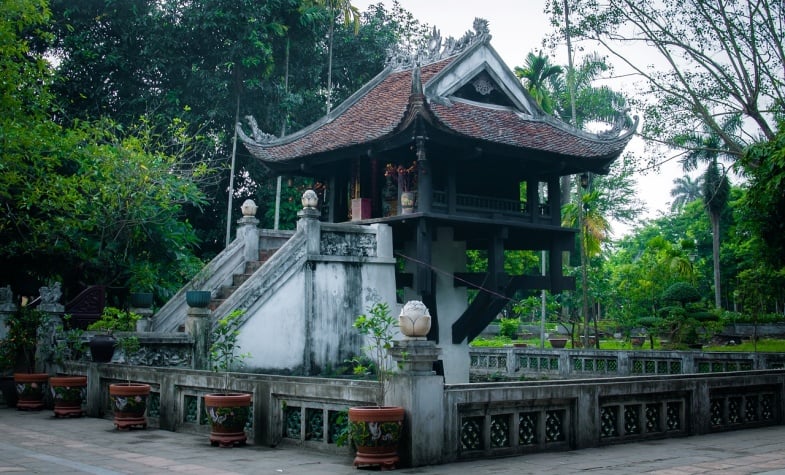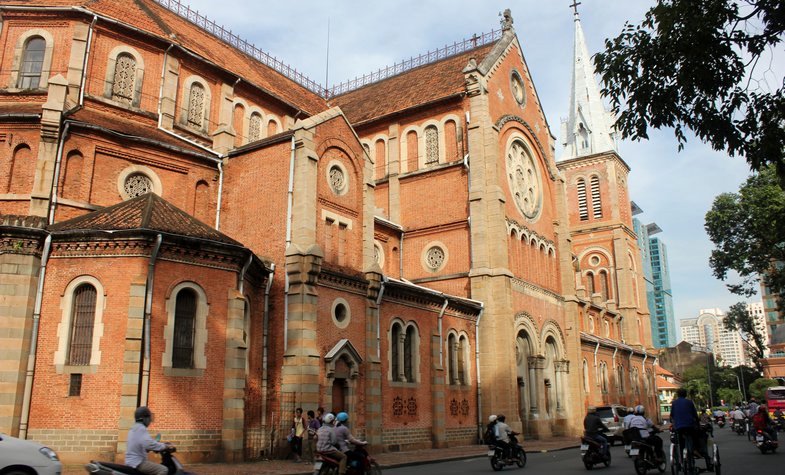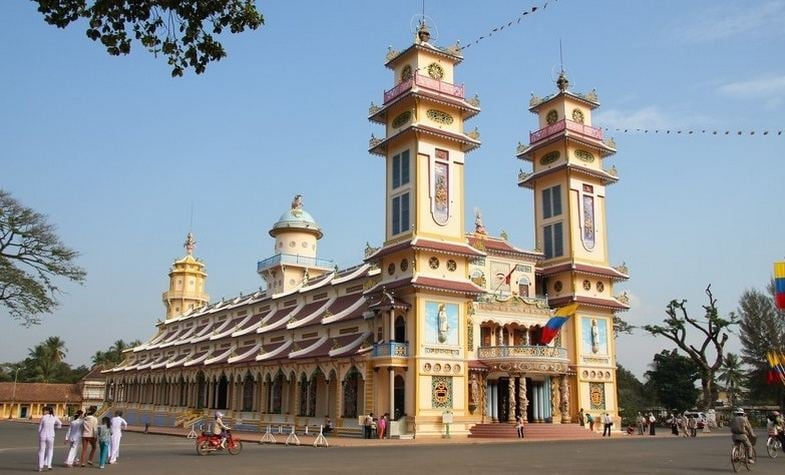Vietnamese religion and belief
When it comes to religion, most Vietnamese people consider themselves non-religious. However, their spiritual life is dominated by a mixture of ritual and belief. For the majority, their everyday behaviors and attitudes are influenced by a mixture of philosophies that derives from Mahayana Buddhism, Confucianism, and Taoism. This Trinity has been co-existing in the country’s culture for centuries and perfectly harmonized with the Vietnamese traditional belief.
Confucianism and Taoism came to Vietnam around the 2nd century BC. And while Confucianism is a philosophy that sets up the cores of social orders and morality system, Taoism is a mystic theory that people rely on to explain the Universe, its evolution and resolution, and the world of Gods around.
Buddhism came almost the same time from India through the contacts with Indian merchants and priests, with a means to deliver and cultivate tolerance and compassion.
Veneration of ancestors and ancestor worship is very important, and almost every Vietnamese family has an altar to worship their ancestors and relate closely to the commemoration of death anniversaries of the predecessors. In rural, a village has a communal house or a temple to worship the village deity. The village deity worshipped in the village’s temple and communal house can be a god or an outstanding figure that rendered great services such as the forefather of a traditional handicraft or a national hero who greatly contributed to the national thriving and defeat foreign invaders.
All Vietnamese citizens are guaranteed to have freedom of belief and religion by the Constitution. There is no national religion in the country since all religions are treated equally. People are free to practice any religion that fits their taste. And a syncretic system religious conflict is something very rare in the country thanks to the country’s religious freedom.
Some major religions in Vietnam include Buddhism, Catholicism, Protestantism, Islam, Caodaism, and Hoa Hao Buddhism.
Buddhism

The One Pillar Pagoda was built by Ly Thai Tong in 1049
Buddhism was first brought to Vietnam in the 2nd century and thrived to its peak in the Ly dynasty (11th century). It was then regarded as the official religion dominating court affairs. Buddhism was preached broadly across the country and it takes a great influence on people's daily life. Its influence also appears in a wide range of traditional literature and architecture. As such, many Buddhism pagodas and temples were built during this time.
At the end of the 14th century, the influence of Buddhism seems to decrease a bit. The ideological influence of Buddhism, however, remained very strong in social and cultural life. Presently, over 70% of Vietnamese are either Buddhist or strongly influenced by Buddhist practices.
Catholicism
Catholicism was into Vietnam in the 17th century by missionaries from Portugal, Spain, and France. Pope Alexander 11 assigned the first bishops to Vietnam in 1659. Nine years later, the first Vietnam priests were fated. At present, the most densely-populated Catholic areas are Bui Chu - Phat Diem in Ninh Binh Province in the North and Ho Nai - Bien Hoa in Dong Nai Province in the South. About 10% of the population is considered Catholic.

Saigon Notre Dame Cathedral
Protestantism
Protestantism was introduced to Vietnam at about the same time as Catholicism. Protestantism, however, remains an obscure religion. At present, most Protestants live in the Central Highlands. There is a Protestant church that remained on Hang Da Street in Hanoi. The number of Protestants living in Vietnam is about 400,000.
Islam
Islamic followers in Vietnam are mostly from the Cham ethnic minority group living in the central part of the central coast. The number of Islamic followers in Vietnam is approximately 50,000.
Caodaism

Cao Dai Holy See in Tay Ninh
Caodaism first came to the country in 1926. It is also known as Dai Dao Tam Ky Pho Do, a name that insists on the importance of the cult of the three supreme beings: Buddha, Jesus Christ, and the Spirit of Cao Dai.
The Cao Dai Holy See in Tay Ninh is the central point of the settlements of Cao Dai followers in South Vietnam. Now, followers can also be found in Central Vietnam, Central Highlands, and even in the north of the country. The number of followers of this religion is estimated at 2 million.
Hoa Hao Sect
The Hoa Hao Sect was first introduced to Vietnam in 1939. More than 1 million Vietnamese are followers of this sect. Most of them live in the southwest of Vietnam.
Mother Worship (Tho Mau)
Vietnamese mother-worship cult is recognized as a primitive religion. Mother has pronounced Me in the Vietnamese language, or Mau in Sino-script. The mother worship cult might be originated from the cult of the Goddess in ancient ages. In the Middle Ages, the Mother was worshipped in temples and palaces. Since it is a worshipping custom and not a religion, the Mother worshipping cult has not been organized as which Buddhism and Catholicism have. As a result, the affiliations of the cult have become various and different places still have different customs.
The custom of Mother worship originated from the north. In the south, the religion has integrated the local goddesses such as Thien Y A Na (Hue) and Ba Den temple (Tay Ninh).
A fact is that the Mother worship cult was influenced by other religions, mainly Taoism.
***
Travel Authentic Asia Company is your best choice for discovering the beauty of Southeast Asia. Our experienced and knowledgeable travel advisors are committed to helping you create a tailor-made tour and extraordinary experiences in this majestic region.
If you're looking for an authentic cultural experience, do not hesitate to contact Travel Authentic Asia to choose a Vietnam tour, Southeast Asia tour package or to customize your own style tour to South East Asia.

